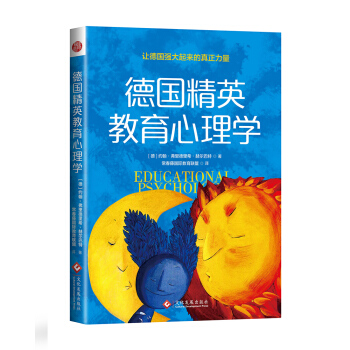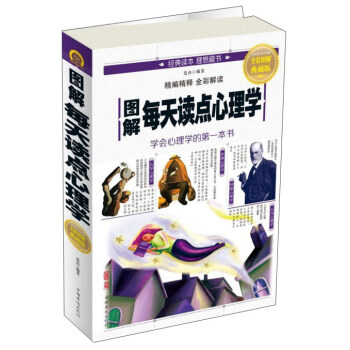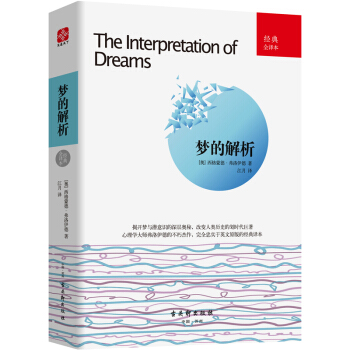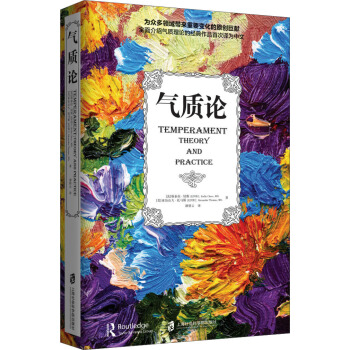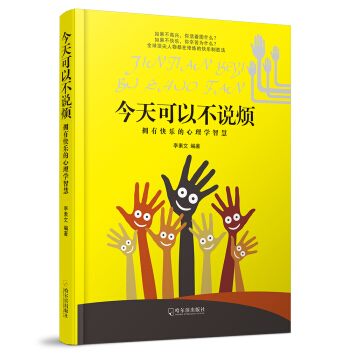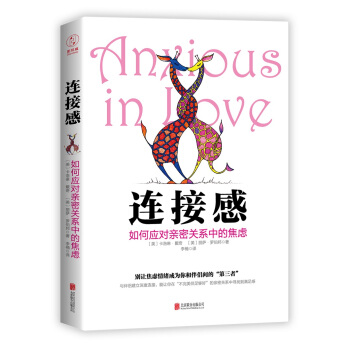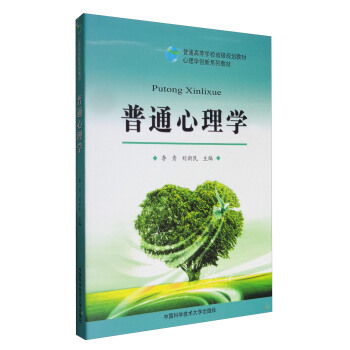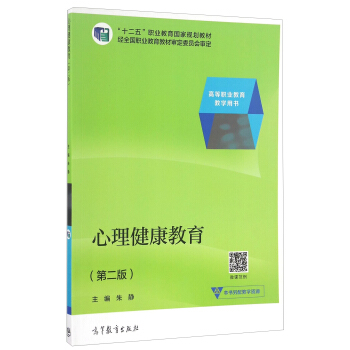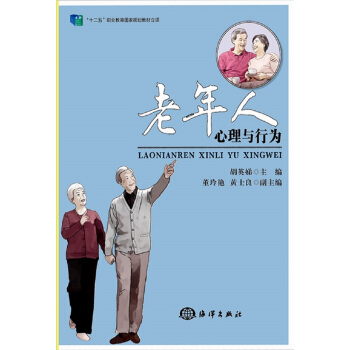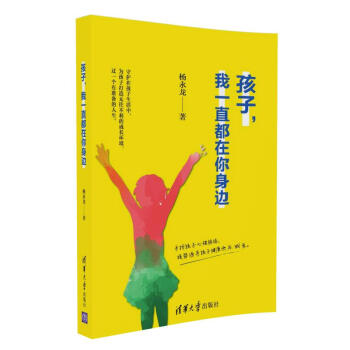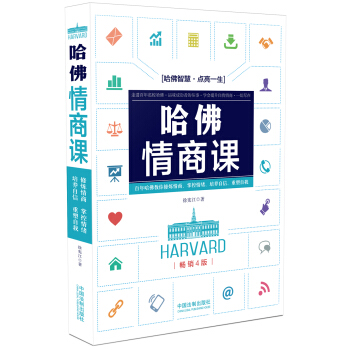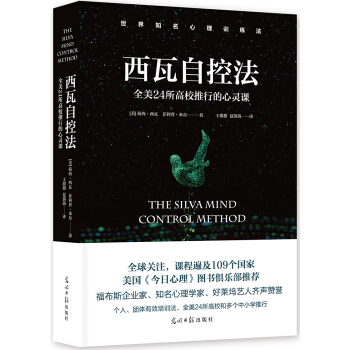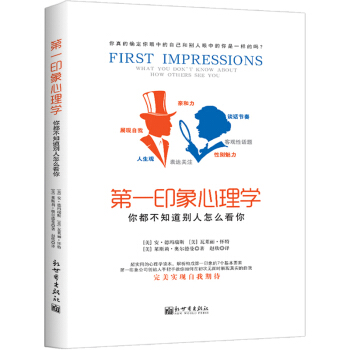![《教育心理学:理论与实践》(第10版,英文版) [Educational Psychology:Theory and Practice (10e)]](https://pic.windowsfront.com/12087973/5930d5afN33de2b8e.jpg)

具体描述
编辑推荐
适读人群 :心理学、教育学专业的教师、学生及研究者,以及各类教育工作者《教育心理学:理论与实践》(第10版)在内容体系的构架、事例的科学性、实用性以及可读性等方面堪称典范,第7版引进国内后得到学界的普遍好评,是一部经得起时间检验又与时俱进的优质教材;
作者罗伯特·斯莱文是美国约翰·霍普金斯大学终身教授、教育研究与改革中心主任,英国约克大学有效教育研究中心主任以及“让所有人都成功”基金会主席,曾多次荣获美国教育研究会和国家教育委员会颁发的重要奖项,本书融汇了作者数十年的教学经验和研究成果;
《教育心理学:理论与实践》(第10版)秉承“理论知识与实用策略并举、多元教学理念与方法并存”的宗旨,既如学术专著般全面、严谨、前沿,又具有可读性和实用性,为解决教师在日常课程中遇到的实际问题提供了基于课堂研究的建议;
《教育心理学:理论与实践》(第10版)通过大量的真实案例将理论与实践明确地联系起来,帮助你把教育心理学中学到的知识迁移到自己的教学中去;写作风格让你在阅读它时有身临其境的感觉,似乎能听到学生的话语,闻到学校食堂午餐的香味;
第10版介绍了多个主题的研究以及实践应用,更新了656篇参考文献,2000年以后的文献占全部参考文献中的55%,反映了近十年来教育心理学及教育实践的*发展和趋势;
中国心理学界泰斗张厚粲教授、中国心理学会教育心理学专业委员会主任陈英和教授倾力推荐;
教育部高等学校心理学教学指导委员会推荐用书。
内容简介
美国著名教育心理学家、约翰·霍普金斯大学罗伯特·斯莱文教授撰写的《教育心理学:理论与实践》(第10 版)是一部堪称典范的心理学教材,在内容体系的构架、事例的科学性、实用性以及可读性等方面广受赞誉。
《教育心理学:理论与实践》(第10 版)不仅介绍了教育心理学领域内的主要理论、基本概念、基本规律与方法,而且通过大量的真实案例将理论与实践明确地联系起来,教会读者如何将教育心理学的理论知识迁移到现实的课堂教学中,成长为一名“有意识的教师”。作者秉承了理论知识与实用策略并举、多元教学理念与方法并存的特色,每一章都以一幕场景开始,阐释该章强调的实践问题,之后的“理论应用于实践”和“有意识的教师”专栏则提供了进一步的具体策略,以供教师用来改善学生的学习。
《教育心理学:理论与实践》(第10 版)对全书进行了修订,增补了新实例,精炼了语言,删除了过时的或无关紧要的内容,补充了教育心理学近十年来的新进展及656 篇新的参考文献。《教育心理学:理论与实践》(第10 版)既可作为高等院校教育心理学课程的教材或参考书,供心理学、教育学专业的教师、学生及研究者使用,也适合各类教育工作者参考阅读。
作者简介
罗伯特·斯莱文(Robert E. Slavin)是美国约翰·霍普金斯大学教育研究与改革中心主任、英国约克大学有效教育研究中心主任以及“让所有人都成功”基金会主席。他于1975 年在约翰·霍普金斯大学获社会关系学博士学位,迄今撰写了200 余篇关于合作学习、能力分组、学校和班级组织、废除种族歧视、纳入主流、研究评论以及实证改革等方面的论文和书中章节。斯莱文博士的著作(包括与他人合著)多达20 部,包括《合作学习》《学校和班级组织》《针对高危学生的有效方案》《预防早期的学业失败》《200万儿童:让所有人都成功》《拉丁裔学生的有效项目》《问责制时代的教育研究》。1985 年,斯莱文博士因应用项目研究而荣获了美国教育研究会(AERA)颁发的雷蒙德·卡特尔早期职业奖;1988 年,他在美国教育研究会主办的学术期刊上获得了帕尔默·约翰逊*论文奖;1994 年获得查尔斯·达纳奖,1998 年获得美国国家教育委员会颁发的詹姆斯·布赖恩特·科南特奖,2000 年获得州首席教育官员联合会颁发的杰出贡献奖;2008年他在美国教育研究会主办的杂志上再次获得帕尔默·约翰逊*论文奖,2009 年获得AERA 研究综述奖。
目录
Brief Contents
CHAPTER 1 Educational Psychology: A Foundation for Teaching 1
CHAPTER 2 Cognitive, Language, and Literacy Development 28
CHAPTER 3 Social, Moral, and Emotional Development 52
CHAPTER 4 Student Diversity 78
CHAPTER 5 Behavioral Theories of Learning 114
CHAPTER 6 Information Processing and Cognitive Theories of Learning 142
CHAPTER 7 The Effective Lesson 182
CHAPTER 8 Student-Centered and Constructivist Approaches to Instruction 216
CHAPTER 9 Grouping, Differentiation, and Technology 248
CHAPTER 10 Motivating Students to Learn 284
CHAPTER 11 Effective Learning Environments 314
CHAPTER 12 Learners with Exceptionalities 352
CHAPTER 13 Assessing Student Learning 396
CHAPTER 14 Standardized Tests and Accountability 446
Appendix Using This Text to Prepare for the Praxis? Principles of Learning and Teaching Exam 482
References 497
精彩书摘
What Makes a Good Teacher? What makes a good teacher? Is it warmth, humor, and the ability to care about people? Is it planning, hard work, and self-discipline? What about leadership, enthusiasm, a contagious love of learning, and speaking ability? Most people would agree that all of these qualities are needed to make a good teacher, and they would certainly be correct (see Wayne & Youngs, 2003). But these qualities are not enough.
■ Knowing the Subject Matters (But So Does Teaching Skill)
There is an old joke that goes like this:
Question: What do you need to know to be able to teach a horse? Answer: More than the horse!
This joke makes the obvious point that the first thing a teacher must have is some knowledge or skills that the learner does not have; you must know the subject matter you plan to teach. But if you think about teaching horses (or children), you will soon realize that although subject matter knowledge is necessary, it is not enough. A rancher may have a good idea of how a horse is supposed to act and what a horse is supposed to be able to do, but if he doesn’t have the skills to make an untrained, scared, and unfriendly animal into a good saddle horse, he’s going to end up with nothing but broken ribs and teeth marks for his trouble. Children are a lot smarter and a little more forgiving than horses, but teaching them has this in common with teaching horses: Knowledge of how to transmit information and skills is at least as important as knowledge of the information and skills themselves. We have all had teachers (most often college professors, unfortunately) who were brilliant and thoroughly knowledgeable in their fields but who could not teach. Ellen Mathis may know as much as Leah Washington about what good writing should be, but she has a lot to learn about how to get thirdgraders to write well.
For effective teaching, subject matter knowledge is not a question of being a walking encyclopedia. Vast knowledge is readily available. However, effective teachers not only know their subjects but also can communicate their knowledge to students. The celebrated high school math teacher Jaime Escalante taught the concept of positive and negative numbers to students in a Los Angeles barrio by explaining that when you dig a hole, you might call the pile of dirt +1, the hole –1. What do you get when you put the dirt back in the hole? Zero. Escalante’s ability to relate the abstract concept of positive and negative numbers to everyday experience is one example of how the ability to communicate knowledge goes far beyond simply knowing the facts.
■ Mastering Teaching Skills
The link between what a teacher wants students to learn and students’ actual learning is called instruction, or pedagogy. Effective instruction is not a simple matter of one person with more knowledge transmitting that knowledge to another. If telling were teaching, this book would be unnecessary. Rather, effective instruction demands the use of many strategies.
For example, suppose Paula Ray wants to teach a lesson on statistics to a diverse class of fourth-graders. To do so, Paula must accomplish many related tasks. She must make sure that the class is orderly and that students know what behavior is expected of them. She must find out whether students have the prerequisite skills; for example, students need to be able to add and divide to find averages. If any do not, Paula must find a way to teach students those skills. She must engage students in activities that lead them toward an understanding of statistics, such as having students roll dice, play cards, or collect data from experiments; and she must use teaching strategies that help students remember what they have been taught. The lessons should also take into account the intellectual and social characteristics of students in the fourth grade and the intellectual, social, and cultural characteristics of these particular students. Paula must make sure that students are interested in the lesson and motivated to learn statistics. To see whether students are learning what is being taught, she may ask questions or use quizzes or have students demonstrate their understanding by setting up and interpreting experiments, and she must respond appropriately if these assessments show that students are having problems. After the series of lessons on statistics ends, Paula should review this topic from time to time to ensure that it is remembered.
These tasks—motivating students, managing the classroom, assessing prior knowledge, communicating ideas effectively, taking into account the characteristics of the learners, assessing learning outcomes, and reviewing information—must be attended to at all levels of education, in or out of schools. They apply as much to the training of astronauts as to the teaching of reading. How these tasks are accomplished, however, differs widely according to the ages of the students, the objectives of instruction, and other factors.
What makes a good teacher is the ability to carry out all the tasks involved in effective instruction (Burden & Byrd, 2003; Kennedy, 2006). Warmth, enthusiasm, and caring are essential (Cornelius-White, 2007; Eisner, 2006), as is subject matter knowledge and understanding of how children learn (Wiggins & McTighe, 2006). But it is the successful accomplishment of all the tasks of teaching that makes for instructional effectiveness (Shulman, 2000).
■ Can Good Teaching Be Taught?
Some people think that good teachers are born that way. Outstanding teachers sometimes seem to have a magic, a charisma that mere mortals could never hope to achieve. Yet research has begun to identify the specific behaviors and skills that make a “magic” teacher (Borman & Kimball, 2005). An outstanding teacher does nothing that any other teacher cannot also do—it is just a question of knowing the principles of effective teaching and how to apply them. Take one small example: In a high school history class, two students in the back of the class are whispering to each other, and they are not discussing the Treaty of Paris! The teacher slowly walks toward them without looking, continuing his lesson as he walks. The students stop whispering and pay attention. If you didn’t know what to look for, you might miss this brief but critical interchange and believe that the teacher just has a way with students, a knack for keeping their attention. But the teacher is simply applying principles of classroom management that anyone could learn: Maintain momentum in the lesson, deal with behavior problems by using the mildest intervention that will work, and resolve minor problems before they become major ones. When Jaime Escalante gave the example of digging a hole to illustrate the concept of positive and negative numbers, he was also applying several important principles of educational psychology: Make abstract ideas concrete by using many examples, relate the content of instruction to the students’ background, state rules, give examples, and then restate rules.
Can good teaching be taught? The answer is definitely yes. Good teaching has to be observed and practiced, but there are principles of good teaching that teachers need to know, which can then be applied in the classroom. The major components of effective instruction are summarized in Figure 1.1.
前言/序言
When I first set out to write Educational Psychology: Theory and Practice, I had a very clear purpose in mind. I wanted to give tomorrow’s teachers the intellectual grounding and practical strategies they will need to be effective instructors. Most of the textbooks published then, I felt, fell into one of two categories: stuffy or lightweight. The stuffy books were full of research but were ponderously written, losing the flavor of the classroom and containing few guides to practice. The lightweight texts were breezy and easy to read but lacked the dilemmas and intellectual issues brought out by research. They contained suggestions of the “Try this!” variety, without considering evidence about the effectiveness of those strategies.
My objective was to write a text that
Presents information that is as complete and up to date as the most research-focused texts but is also readable, practical, and filled with examples and illustrations of key ideas.
Includes suggestions for practice based directly on classroom research (tempered by common sense) so I can have confidence that when you try what I suggest, it will be likely to work.
Helps you transfer what you learn in educational psychology to your own teaching by making explicit the connection between theory and practice through numerous realistic examples. Even though I have been doing educational research since the mid-1970s, I find that I never really understand theories or concepts in education until someone gives me a compelling classroom example; and I believe that most of my colleagues (and certainly teacher education students) feel the same way. As a result, the word example or similar words appear hundreds of times in this text.
Appeals to readers; therefore, I have tried to write in such a way that you will almost hear students’ voices and smell the lunch cooking in the school cafeteria as you read.
These have been my objectives for the book from the first edition to this, the tenth edition. With every edition, I have made changes throughout the text, adding new examples, refining language, and deleting dated or unessential material. I am meticulous about keeping the text up to date, so this edition has more than 2,000 reference citations, 55 percent of which are from 2000 or later. The tenth edition is updated with more than 656 new references. Although some readers may not care much about citations, I want you and your professors to know what research supports the statements I’ve made and where to find additional information.
The field of educational psychology and the practice of education have changed a great deal in recent years, and I have tried to reflect these changes in this edition. Several years ago, direct instruction and related teacher effectiveness research were dominant in educational psychology. Then constructivist methods, portfolio and performance assessments, and other humanistic strategies returned. Now, the emphasis is on accountability, which requires teachers more than ever to plan outcomes and teach purposefully, qualities that I emphasize in this edition as intentional teaching. In the earliest editions of this text, I said that we shouldn’t entirely discard discovery learning and humanistic methods despite the popularity, then, of direct instruction. In the next editions, I made just the opposite plea: that we shouldn’t completely discard direct instruction despite the popularity of active, student-centered teaching and constructivist methods of instruction. I continue to advocate a balanced approach to instruction. No matter what their philosophical orientations, experienced teachers know that they must be proficient in a wide range of methods and must use them thoughtfully.
The tenth edition presents new research and practical applications of many topics. Throughout, this edition reflects the “cognitive revolution” that has transformed educational psychology and teaching. The accompanying figure presents a concept map of the book’s organization.
Given the developments in education in recent years, particularly with the introduction of the No Child Left Behind legislation in 2001 and the focus on standards and accountability that continues in the Obama administration, no one can deny that teachers matter or that teachers’ behaviors have a profound impact on student achievement. To make that impact positive, teachers must have both a deep understanding of the powerful principles of psychology as they apply to education and a clear sense of how these principles can be applied. The intentional teacher is one who constantly reflects on his or her practices and makes instructional decisions based on a clear conception of how these practices affect students. Effective teaching is neither a bag of tricks nor a set of abstract principles; rather, it is intelligent application of well-understood principles to address practical needs. I hope this edition will help you develop the intellectual and practical skills you need to do the most important job in the world—teaching.
New and Expanded Coverage
Among the many topics that receive new or expanded coverage in this edition are:
21st century skills (Chapter 1 and 21st Century Learning features throughout the text)
Language and literacy development in the elementary years (Chapter 2)
New research on bilingual education (Chapter 4)
Emerging research in neuroscience (Chapter 6)
Expanded coverage on study strategies (Chapter 6)
The latest research on cooperative learning (Chapter 8)
New research on tutoring and small group remediation for struggling readers (Chapter 9)
More on differentiated instruction (Chapter 9)
New coverage of technology applications (Chapter 9)
New sections on bullying and classroom management (Chapter 11)
Expanded coverage of Response to Intervention (Chapter 12)
Expanded coverage of IEPs (Chapter 12)
Expanded coverage of autism spectrum disorder (Chapter 12)
Additional coverage of value-added assessments (Chapter 14)
New information on testing accommodations for English learners (Chapter 14)
New Appendix that correlates the content of each chapter to corresponding topics within the Praxis? Principles of Learning and Teaching Tests
656 new and updated references, 55 percent of which are from 2000 or later
用户评价
《教育心理学:理论与实践》(第10版)给我最直观的感受是,它彻底颠覆了我之前对“教育心理学”的认知。我曾以为,它是一门关于“如何应对‘问题学生’”的学科,是用来“修补”那些“不合格”个体的工具。然而,这本书所展现的,是一个更为宏大、更为积极、更为赋能的教育心理学。它不仅仅关注“问题”,更关注“成长”;不仅仅关注“缺陷”,更关注“潜能”。书中关于“童年发展”和“青少年发展”的章节,让我看到了不同年龄段学生在身心发展上的独特性,以及这些独特性对学习方式和学习内容的要求。这让我意识到,教育必须是“合身”的,而不是“统一”的。再者,书中对“评估与测量”的讨论,也让我看到了教育心理学在教育诊断方面的作用。它不再是简单的“分数”的叠加,而是对学生学习过程、学习成果、以及潜在能力进行多维度、多角度的全面评估。这让我开始思考,我的评价方式是否真正反映了学生的学习情况?是否能够为他们的进一步发展提供有益的指导?这本书,让我看到了教育心理学作为一门科学的严谨性,以及它作为一门艺术的创造性。
评分坦白说,在拿起《教育心理学:理论与实践》(第10版)之前,我对“教育心理学”的认识,很大程度上停留在那些耳熟能详的心理学家的名字和他们提出的基本理论框架上。然而,这本书并没有仅仅停留在对历史理论的梳理,而是将其与当代教育实践紧密结合,展现了教育心理学在现实中的生命力。书中的“学习动机”部分,让我对学生“为什么会学”有了更深入的理解。它不仅仅停留在“内在动机”和“外在动机”的二分法,而是探讨了成就归因、自我效能感、兴趣、目标设定等多种因素如何相互作用,共同影响学生的学习投入。这让我开始反思,我平时的教学,是否能够有效地激发学生的内在学习动力?我是否为他们提供了足够的成功体验,让他们能够建立积极的自我效能感?再者,书中对“信息加工理论”的阐述,也让我对学生的“记忆”和“思维”有了更细致的认识。它不仅仅是简单的“输入-输出”,而是涉及到注意、编码、储存、提取等一系列复杂的认知过程。这让我明白,要让学生真正“学会”,就需要关注他们的信息加工过程,设计更符合其认知规律的教学活动。这本书,如同一个经验丰富的向导,带领我穿越教育心理学的复杂迷宫,让我看到理论的精妙,也看到实践的挑战。
评分我曾以为,教育心理学无非就是对学生行为的“诊断”与“矫正”,一个“问题学生”的背后,无非是各种标签的叠加,然后是标准化的干预措施。然而,这本书(《教育心理学:理论与实践》第10版)却让我看到了教育心理学更为宏大且人性的层面。它并没有将学生简单地视为需要被“修理”的对象,而是将他们置于一个更为广阔的社会文化背景中去理解。书中所探讨的“社会性发展”和“情感发展”,让我深刻反思了课堂之外的因素对学生学习的影响。一个学生在家庭中遭遇的困境,或者与同伴之间的人际关系问题,都可能成为他们课堂表现的“幕后推手”。这本书的伟大之处在于,它并没有回避这些复杂而敏感的问题,而是鼓励教育者去理解、去接纳,并尝试去创造一个能够支持学生全面发展的环境。我尤其印象深刻的是关于“师生关系”的论述,它并非仅仅停留于“建立良好关系”的口号,而是深入分析了不同沟通模式、情感表达方式对学生安全感、归属感以及学习动机的影响。这让我意识到,教师的角色不仅仅是知识的传授者,更是学生心理健康和成长的重要引路人。那些看似微不足道的课堂互动,比如一个肯定的眼神,一句温暖的鼓励,都能在学生心中播下自信的种子。这本书,让我看到了教育的温度,也让我更深刻地认识到,真正有效的教育,是对生命的尊重与关怀,是对潜能的激发与引导,是对未来负责任的承诺。它不仅仅是一本教科书,更像是一面镜子,映照出我作为教育者的不足,也点亮了我前行的方向。
评分《教育心理学:理论与实践》(第10版)给我最直接的改变,是对“教学行为”的再思考。我曾经认为,一个好的教师,就是能清晰地讲解知识,布置大量的练习,然后对学生的表现进行评分。然而,这本书却让我意识到,教学远不止于此。它深入剖析了教师在课堂上的决策过程,包括如何设计教学活动、如何管理课堂秩序、如何进行情绪调控,以及如何与学生建立积极的互动关系。书中的“课堂管理”章节,让我不再视其为一种“镇压”或“控制”,而是理解其背后更深层次的心理学原理,比如如何满足学生的基本心理需求,如何建立清晰的规则和期望,以及如何用积极的方式引导学生行为。更让我醍醐灌顶的是,书中对“教师专业发展”的探讨。它鼓励教师不断反思自己的教学实践,从理论中汲取养分,并勇于尝试新的方法。它让我看到,教学是一个持续学习和成长的过程,而教育心理学,正是这个过程中不可或缺的“罗盘”。这本书,让我从一个“执行者”转变为一个更具“反思性”的“学习型”教师,让我更愿意去探索和实践,去创造更有效的教学体验。
评分坦白说,我一直觉得,教育心理学离我这个一线教师的生活,好像有点“远”,它更多地存在于书本上、课堂里,而我更关注的是如何让我的学生在考试中取得好成绩。然而,《教育心理学:理论与实践》(第10版)这本书,却以一种润物细无声的方式,渗透到了我日常教学的每一个细节之中。它让我意识到,那些看似“难以捉摸”的学生行为,背后往往有着深刻的心理学根源。例如,当一个学生在课堂上表现得“坐立不安”、“注意力不集中”时,我不再简单地认为他“不听话”,而是会去思考,他是否是因为学习内容对他来说过于枯燥?他的内在动机是否被激发?或者,他是否面临着学习上的某些挑战?这本书,让我从一个“执行者”转变为一个“理解者”,让我能够更 empathetically 地去面对我的学生。再者,书中关于“教育技术”与“学习”的结合,也让我看到了教育的未来发展趋势。它并非简单地将技术视为工具,而是深入探讨了技术如何影响学生的认知过程、如何促进学习的个性化和协作化。这让我开始思考,我是否应该更多地拥抱新技术,并将其有效地融入我的教学实践中。这本书,如同一位智慧的长者,在我迷茫的时刻,点亮了我前行的灯塔。
评分打开《教育心理学:理论与实践》(第10版)这本书,我首先感受到的是它扑面而来的“现实感”。它并没有用晦涩难懂的学术语言来“劝退”读者,而是用一个个生动、鲜活的案例,将教育心理学的理论“拉”到了我们触手可及的现实世界。例如,在讨论“学生错误”的时候,书中并非简单地将其视为“失败”,而是将其看作是学习过程中不可避免的、甚至是宝贵的“资源”。它分析了错误产生的原因,从认知层面到情感层面,再到社会文化层面,并提出了如何将错误转化为学习机会的策略。这让我对学生犯错的态度,从最初的“沮丧”转变为“欣慰”,因为我知道,每一个错误背后,都可能蕴藏着一个学习的契机。此外,书中对“课堂互动”的深入分析,也让我意识到,课堂不仅仅是教师单方面的“讲授”,更是师生之间、生生之间信息、情感、思想的深度交流。它详细探讨了提问的技巧、倾听的艺术、反馈的有效性等,这些看似细微的环节,却对课堂的整体氛围和学习效果有着至关重要的影响。这本书,让我看到,教育心理学是如此地贴近我们的日常教学,又是如此地充满智慧和力量。
评分在阅读《教育心理学:理论与实践》(第10版)的过程中,我最大的感受是,它让我重新审视了“学习”本身。我们常常过于关注“教什么”,而忽略了“如何学”以及“为什么学”。这本书则把“学习”的重心,巧妙地从教师的“教”转移到了学生的“学”上。它详细阐述了各种学习理论,比如行为主义、认知主义、建构主义等,但并非生硬的理论堆砌,而是通过大量的案例分析,将抽象的概念具象化。我曾以为,学生之所以学不好,是因为他们不够聪明,或者不够努力。但读了这本书,我才明白,很多时候,学习的障碍并非来源于个体能力的先天不足,而是源于对学习过程的误解,或是缺乏有效的学习策略。书中关于“元认知”的探讨,更是让我眼前一亮。它告诉我们,知道自己“如何学习”和“如何监控自己的学习过程”,才是真正高效学习的关键。这对于我自身的教学工作也带来了巨大的启发。我开始思考,我是否教会了学生如何去思考?我是否引导了他们去反思自己的学习方法?我是否鼓励了他们去主动探索?这本书的价值在于,它提供了一套系统性的框架,帮助我们理解学习的复杂性,并为如何促进学生的深度学习提供了切实可行的路径。它让我们看到,教育心理学不仅仅是关于“诊断”问题,更是关于“赋能”学生,让他们成为更加自主、更加有能的终身学习者。
评分这本书(《教育心理学:理论与实践》第10版)给我的冲击,来自于它对“个体差异”的深刻洞察。我曾一度认为,教育就应该尽可能地“标准化”,让所有学生都能达到一个相同的目标。然而,这本书却用丰富的研究和鲜活的案例,驳斥了这种过于简单的想法。它详细探讨了学生的认知风格、学习偏好、天赋差异、情感需求等诸多方面,让我意识到,每一个学生都是独一无二的,他们的学习路径和节奏也必然不同。书中所阐述的“差异化教学”的理念,不再是空洞的口号,而是有具体的理论支撑和实践指导。它让我看到了,如何根据不同学生的特点,调整教学内容、教学方法、评价方式,从而最大限度地激发每个学生的潜能。我尤其欣赏书中关于“特殊教育需求”的章节,它让我认识到,对于那些有特殊学习需求的学生,我们更需要的是理解、支持和专业的干预,而不是简单地将他们排除在外。这本书,不仅仅是为普通教育者提供指导,更是为所有致力于公平而有质量的教育的同仁们,提供了一份宝贵的参考。它让我坚信,教育的本质,在于尊重每一个生命,并为其量身定制最适合其成长的土壤。
评分初次翻开这本厚重的《教育心理学:理论与实践》(第10版),我并没有抱持着一种“期待”的心情,更像是一种“求知”的冲动。毕竟,作为一名在教育一线摸爬滚打多年的教师,对于“理论”与“实践”这两个词汇,我早已有了自己一套模糊却也坚实的理解。我曾以为,教育心理学无非就是那些罗列着各种理论模型、研究方法,最终归于几句“因材施教”的泛泛之谈。然而,这本书,或者说,这本书所承载的知识体系,却以一种我未曾预料到的方式,悄然地、又深刻地触动了我。它并没有像某些教科书那样,生硬地将理论知识灌输进来,而是通过对大量案例的剖析,对不同情境下学习者行为的细致描摹,以及对教育者自身心理状态的深入反思,构建起了一个既有深度又有广度的知识框架。读到关于“动机理论”的部分,我脑海中立刻闪现出那些曾经让我头疼不已的学生——有的总是提不起兴趣,有的则在压力下表现失常。这本书并没有简单地给出一个“解决方案”,而是带领我深入探究这些行为背后的心理动因,是内在的成就感缺失?是外在的评价压力?抑或是对自身能力的怀疑?这种循序渐进的引导,让我不再仅仅是“知道”理论,而是真正开始“理解”理论在现实教育场景中的复杂性与多面性。再者,书中对“认知发展”的阐述,也极大地拓宽了我对学生学习过程的认知。我曾固守于 Piaget 的阶段论,认为学生的思维发展是按部就班的。但这本书结合了 Vygotsky 的社会文化理论,让我意识到,学习不仅仅是内在能力的成熟,更是与他人互动、与环境交互的动态过程。那些看似“笨拙”的孩子,也许只是需要更多来自同伴和教师的支持与引导。这种视角上的转变,无疑为我今后的教学提供了新的思路和可能性。它让我意识到,教育心理学并非高高在上的学术象牙塔,而是贴近每一个课堂、每一个学生、甚至每一位教师内心的宝贵指南。
评分我曾经以为,教育心理学无非就是研究学生“出了什么问题”,然后找到“解决办法”。但《教育心理学:理论与实践》(第10版)这本书,让我看到了教育心理学更为积极、更为建设性的一面。它不仅仅关注“问题”,更关注“潜能”的激发与“优势”的培养。书中关于“创造力”和“问题解决能力”的探讨,让我看到了教育的另一种可能性。它不再是仅仅传授现成的知识,而是鼓励学生去独立思考,去探索未知,去创造新的价值。这对我来说,是一种思想上的解放。我开始意识到,作为教育者,我的职责不仅仅是“教书”,更是要“育人”,而“育人”的更高境界,是帮助学生成为一个有独立思考能力、有创新精神、能够解决复杂问题的个体。再者,书中对“伦理道德发展”的阐述,也让我更加重视教育在塑造学生人格方面的作用。它不仅仅是关于知识的积累,更是关于价值观的形成,关于社会责任感的培养。这本书,让我看到,教育心理学是如此地贴近我们作为教育者的工作,又如此地深刻地影响着我们教育的理念和实践。
相关图书
本站所有内容均为互联网搜索引擎提供的公开搜索信息,本站不存储任何数据与内容,任何内容与数据均与本站无关,如有需要请联系相关搜索引擎包括但不限于百度,google,bing,sogou 等,本站所有链接都为正版商品购买链接。
© 2025 windowsfront.com All Rights Reserved. 静流书站 版权所有


